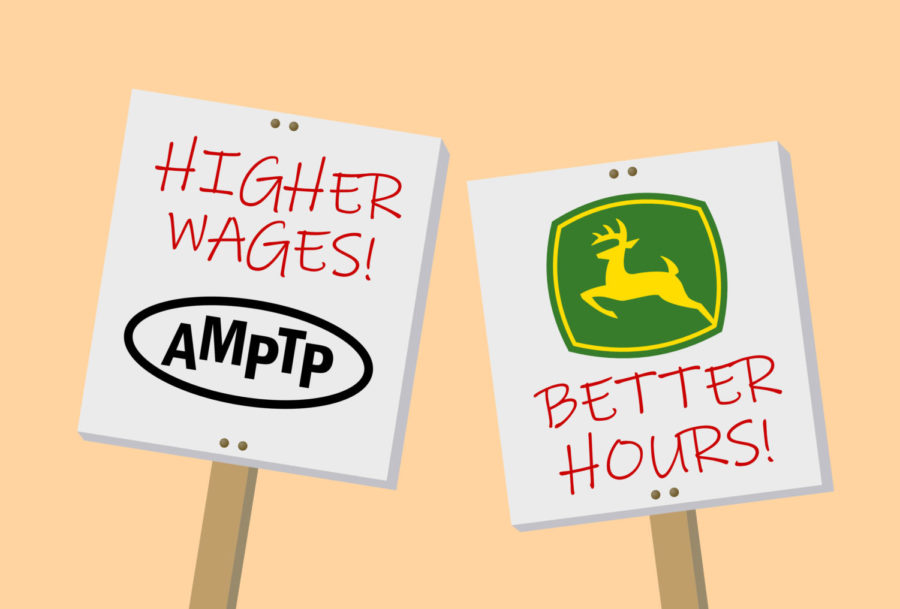“Striketober” is no coincidence
October 20, 2021
In the throes of the COVID-19 pandemic last year, essential workers were seen as heroes. But as time has gone on, I am starting to question more and more why they are not treated like heroes – because that is exactly what they are. The recent wave of worker strikes and protests has shed light on the poor treatment of workers, and created an increase in support for workers’ unions and improved working conditions. But at what cost?
The Wall Street Journal reported that this increase in dissent amongst workers is about more than money alone, as shown by a recent strike by John Deere employees. Even when Deere proposed to increase wages and pension benefits for their employees, workers continued to pressure the company for improved working conditions and negotiating power in over working hours. Workers like these that had to take significant risks throughout the pandemic should not have negative consequences for their decision to remain in the labor force – and now they are fighting back.
The influx of strikes and work stoppages are no coincidence for a few reasons. First, with a large portion of the American labor force leaving their jobs in recent months, this might allow more leverage for unions to incite change as employers cannot risk losing more workers. The Washington Post also recognizes the added costs that suppliers would have to take on to train new employees, as well as the difficulties that workers who quit or are fired would have to endure in terms of finding jobs with similar or higher wages or simply finding a new job in general. If employers do not want to lose their supply chain, then why aren’t they meeting the demands for their workers?
Well, some workers are seeing a positive outcome to their resistance. Particularly, the Washington Post covered the planned strike of over 60,000 Hollywood production workers that would have began yesterday, Oct. 18, if they had not come to an agreement with the Alliance of Motion Picture and Television Producers “that guarantees workers meal breaks, weekends and breaks between shifts, plus significant raises.”
Even as this example has provided some hope for improved working conditions, the Wall Street Journal notes an overall declining in union membership of almost 10 percent from 1983 to 2020. Many argue this has occurred a result of other avenues for employees to use their voices and share their frustrations. Lack of broad membership limits the power of individual unions and reduces the efficacy of actions like strikes and sit-downs. I agree that social media platforms have set up a podium for a large audience, and think that the methods which employees can effectively express their concerns will evolve over time, whether for better or for worse. Social media might make it easier to reach a large number of people, but it could be dangerous to express one’s frustration as an individual rather than a union. Unions foster community among those feeling alienated and rejected from their role in the workforce, and this community is integral in facilitating strength in numbers. If workers speak out on the internet about their current work conditions, it can be easy for employers to retaliate against them individually, especially with the lack of labor laws that stop employers from punishing employees who speak out individually or even with a union, according to the Wall Street Journal. With better policy surrounding how an employer can retaliate, an increase from the current rates of union membership – and, hopefully, more positive outcomes for the workers that risked so much over the course of the pandemic – is forthcoming.






















